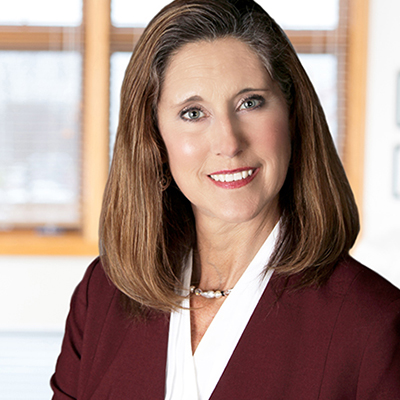Profitability / Articles
-
 Read More
Read MoreIn her article, Mary identifies five impactful ways to build and improve your firm’s culture so you attract and retain the best legal talent; so your lawyers and staff who work efficiently and effectively as a team in handling client matters and generating new matters and clients; in an organization with an exciting plan for the future and in which all lawyers and support staff are valued and appreciated. To improve the culture at your firm, Mary recommends the following:
- Get to the Root of the Problem
- Always Lead by Example
- Don’t Rely on HR to Handle Everything
- Increase Teamwork and Collaboration
- Deliver Happiness to Your People
For each of the five ways to improve culture, she identifies a fantastic resource to help.
-
 Attachment
AttachmentBigLaw is aggressively demoting partners in the face of modern-day legal practice. In case you missed it, this article ran in mid-October in The Wall Street Journal. It profiles Shearman & Sterling and Chadbourne & Parke and presents a somber dose of reality as firms run more like businesses with a watchful eye on profitability. The past year and a half has seen “pervasive” trimming of partners at the nation’s top 100 law firms, says legal consultant Peter Zeughauser. “It’s very difficult for firms to deal with this issue,” says Jeffrey Lowe, head of the law firm practice at recruiting firm Major, Lindsey & Africa. “But the business pressure is forcing them to do so.” Here are few factoids presented in the article:
- The average number of billable hours by equity partners at AmLaw 200 firms has dropped nine percent (9%) since 2007 to 1,589.
- Fifty-six percent (56%) of AmLaw 200 firms plan to de-equitize underperforming partners in the coming year.
- Sixty-seven percent (67%) of them plan to take it one step further and ask partners to leave the firm altogether.
-
 Attachment
AttachmentHere’s yet another report about the overall sluggish marketplace for legal services for even the largest US-based law firms. It’s a buyer’s market, and corporate clients are taking advantage as they work to reign in their spend on outside counsel. We think this long-term market trend has positive implications for smaller and mid-size law firms who find themselves in the position to provide a much more attractive “value proposition” than BigLaw. Here are few highlights of this week’s article:
- Overall growth among the AmLaw 100 firms was anemic in 2015, slowing to its lowest level since the Great Recession in 2008. Indicators aren’t predicting an uptick anytime soon.
- Within the AmLaw 100 firms, the top 28 firms – They use the term “Super Rich.” – are distancing themselves from the rest of the pack when it comes to financial performance with Revenue per Lawyer (RPL) or at least $1 million and Profit per Partner (PPP) of at least $2 million.
- By any measure, Wachtell stands apart from the crowd. With just 261 lawyers, its PPP stands at an eye-popping $6.6 million. That’s $2 million more than second-place Quinn Emanual at $4.4 million.
- The sharpest declines in financial performance in 2015 were seen at Arnold & Porter, Baker & McKenzie, Hunton & Williams and K&L Gates.
As we like to say at MPF, bigger is not always better.
-
 Read More
Read MoreWhat are the key metrics you use to assess your firm’s financial performance? For many firm leaders, it’s total firm revenue. Others look closely at billable hours and/or collections by lawyer. Others keep a watchful eye on overhead expenses and receivables. Larry is a frequent speaker about technology, productivity and the business of law and has been recognized by Fastcase as one of the top 50 innovators in the legal field. He suggests nine vital statistics, including:
- New Clients per Month
- Matter Budgeting
- Utilization Rate per Timekeeper
- Realization Rate per Timekeeper
What’s included in your firm’s financial reports? Are there any indicators you should be looking at that you’re not?
-
 Read More
Read MoreThis short article highlights BTI Consulting’s analysis of more than 330 law firms and reveals that firms with the highest profits (reported or not) exhibit eight key traits that are largely responsible for their exceptional financial performance. Here are four of them:
- Invest the time to get to know their clients, their businesses and their industries;
- Promote internal communication and socialization throughout the year with multiple events beyond the Firm Retreat;
- Provide exceptional client service – especially accessibility and responsiveness; and
- Deliver a uniform client experience across practice area and offices. Is your firm consistently performing well in these areas?
-

Midsized Law Firms Report Things Getting Better
AttachmentThe ABA’a Law Practice magazine asked us to contribute an article for its finance column, drawing upon data collected at The MPF 2014 Leadership Conference. Eighty-five (85) managing partners, mostly from mid-size law firms, attended the full-day conference, and we used audience polling technology to query the crowd about a range of topics.
The article highlights data about financial performance so far this year, alternative fee arrangements and the metric most preferred by managing partners to assess their firms’ overall financial health.
- 2014 Has Been a Pretty Good Year for MidLaw
Forty-two percent (42%) of managing partners said their firms were performing about as expected so far in 2014. Thirty-six percent (36%) said they were beating expectations. - AFA’s Are Not Exactly Taking Off
Forty-eight percent (48%) of managing partners reported that alternative fee arrangements (AFAs) represent less than 5% of firm revenue. Twenty-one percent (21%) said it’s in the 6-10% range. Twenty-seven percent (27%) said they proactively pitch AFAs, with 2/3 reporting little interest from clients. - It’s About the Bottom Line
Twenty-five percent (25%) of firm leaders said they believe that “Total Firm-wide Profit” is the best indicator of a firm’s overall health. Twenty-one percent (21%) preferred “Revenue per Lawyer.”
We also write about succession planning in the article. Are your firm’s current crop of young lawyers up to the task of inheriting the place?
- 2014 Has Been a Pretty Good Year for MidLaw
-
 Read More
Read MoreIn recent years and as the Great Recession drags on, many law firms have been challenged to maintain, much less increase, their profitability. At first, they looked for ways to cut expenses. They let staff and associates go, cancelled firm retreats, slashed investments in marketing and technology and, in some cases, de-equitized underperforming partners. We're all for dealing with underperforming partners, but many of these actions are penny-wise and pound-foolish in our opinion. The real way for your firm to improve its profitability in the near-term is to get serious about your billing and collections practices. John's article offers some great ways to go about it.
-
 Attachment
AttachmentIn our November MPF Flash Survey, managing partners reveal that the most effective ways their firms have improved firm profitability over the last three years. Their answers, in order of effectiveness, are 1) Improved Billing and Collections Practices, 2) Marketing and Business Development, 3) Improved Efficiency in Staffing Matters, and 4) Rate Increases, where possible. Now comes Eric Dewey offers his ten tips – ranging from dealing with underperforming partners to calling on top clients – that can be implemented in 90 days or less.
-

Marketing to Your Existing Clients:
Three Can’t Miss Programs [EDIT]AttachmentThis classic article originally appeared in Law Marketing Exchange, LMA’s national newsletter, back in 1997. Its lessons are more important and relevant than ever. Take great care of your current clients – the ones you want to keep, anyway – and focus your marketing and business development resources accordingly. Provide solid legal work and, perhaps more important, great service. Go visit them. Join their organizations. Throw them a party. Show them you care.
-
 Attachment
AttachmentOver half of in-house counsel – 56%, to be precise – say there has been a "sea change" in how fees are paid to outside counsel. Prompted by the pressure to reduce the overall cost of legal services and fueled by the ACC’s Value Challenge, the time seems right to affect change. Yet, the gap remains wide between the perception of fundamental transformation and the actual practice.
-

Isn’t It Time That Your Firm Develops a Strategic Plan?
AttachmentDo you and your partners have a written, cohesive firm strategy? Or are you merely sharing office space with other sole practitioners? Strategic planning is the key differentiator, but it’s not for the faint of heart.
-
 Attachment
AttachmentHere’s an interesting study that puts law firm billing practices under the microscope. It examines invoices received by 36 large corporate clients finds that location and firm size – not lawyer expertise – are the biggest determinants of a lawyer’s hourly rate. It also concludes that 75% of proposed rate hikes are accepted, and that a lawyer with the title of "partner" can charge up to $100 more per hour than an "associate" with the same experience.
-
 Attachment
AttachmentAlternative fee arrangements (AFAs) are a hot topic these days. Just about every agenda at law firm management conferences over the past few years has at least one or two sessions on the issue. The Association of Corporate Counsel (ACC) seems to be deadly serious about them, too. Yet, most law firms are not in a very good position to act confidently. This article explains AFAs in simple and easy-to-understand terms.
-
 Read More
Read MoreAccording to research conducted by Samford University’s Cumberland School of Law, 55% of lawyers in private practice admit to overbilling on occasion. The temptation only becomes more severe as there is less work to be dome. Don’t let this happen at your firm! Not only is the practice unethical, it may also cause irreparable damage to one of your firm’s most valuable assets – its reputation.
-
 Read More
Read MoreRecession or not, this article from Law Practice magazine includes fifteen really good ideas for lawyers of law firms, regardless of firm size or practice mix. Many of Linda’s suggestions focus on client service and business development. None of them involve rocket science.
-
 Read More
Read MoreSmaller and midsize firms performed much better than their “BigLaw” counterparts during the recession according to this article summarizing the findings of the Small Law Firm Economic Impact Report 2009. The reason? Less leverage, lower rates and better service. It also reports that 86% of small firms (defined as 10-90 lawyers) have had no layoffs in the last six months, and that 83% intend to maintain current compensation levels for lawyers and staff in 2009. The article appears in this month’s issue of IOMA’s Law Office Management & Administration Report. Click here to purchase the full report for $399.
-
 Read More
Read MoreHenning asks "Will it take a revolution to change the way law firms operate?" Will today’s current economic crisis force law firms to rethink the old model of annual hourly rate increases? Radical ideas may not only require a change in business model, but a change to the code of professional responsibility.

















